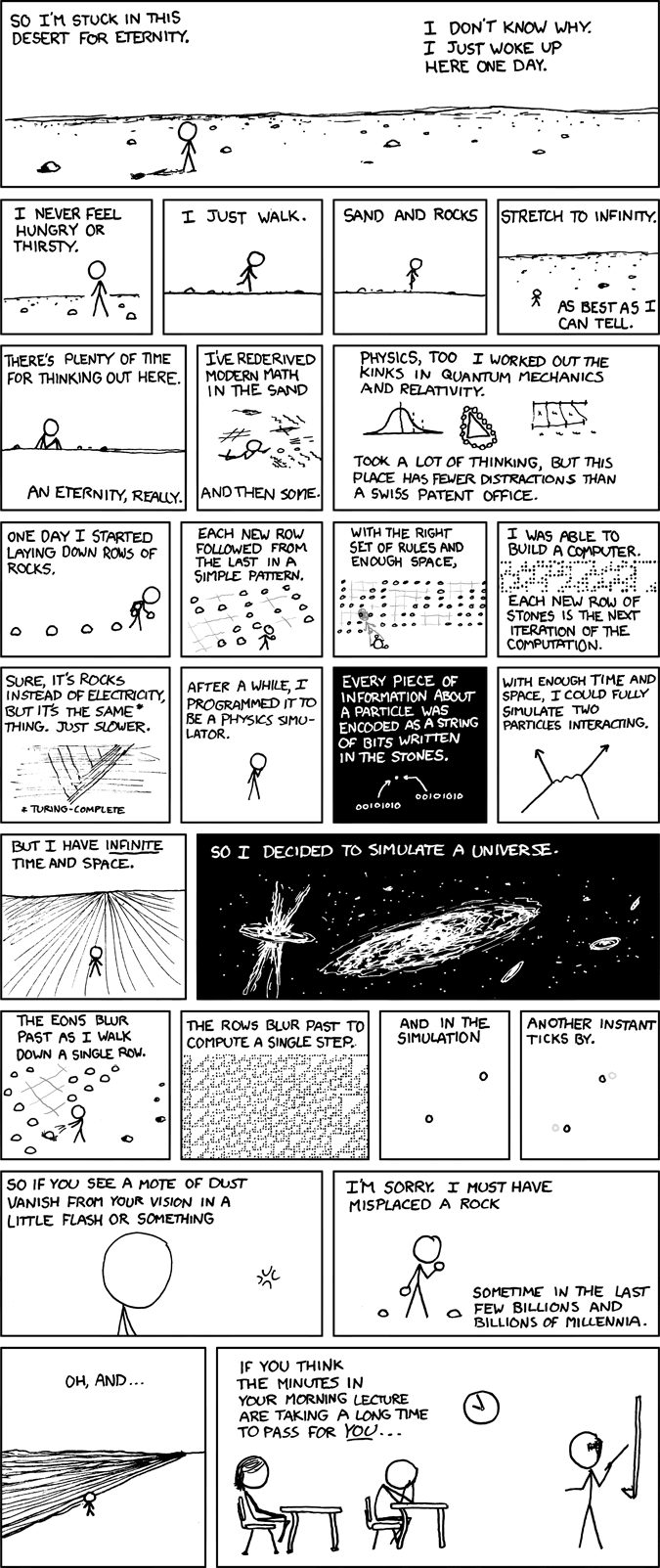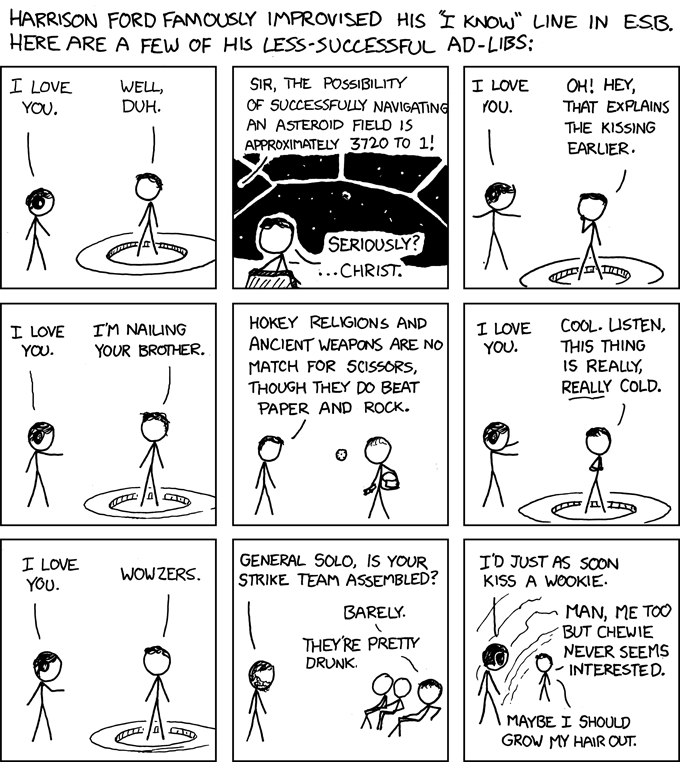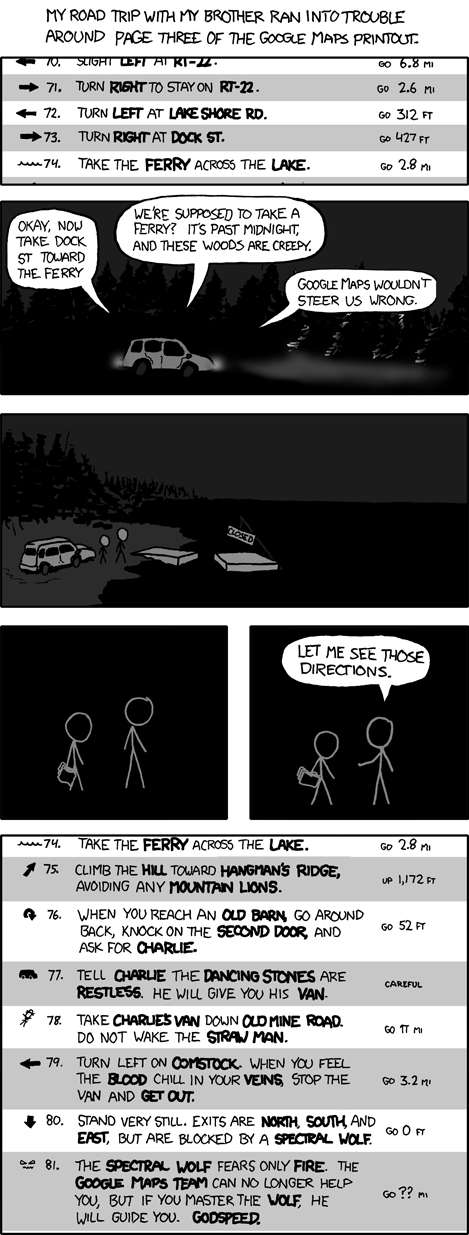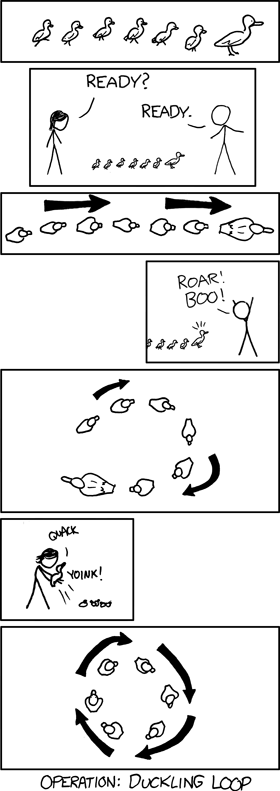Nerd Nerd Revolution
Part IV: xkcd
by
Ross M. Miller
Miller Risk Advisors
www.millerrisk.com
May 18, 2009
Maybe there is hope for the future. I present as
Exhibit 1, xkcd, the brainchild of Randall
Munroe. In case you haven’t heard, xkcd is not some magically goo
that you dab on your CDs to make them sound more like vinyl, but one of the
hottest webcomics. Webcomics are not just the future of
comic strips, they are the only future of comics. Print newspapers, the
birthplace of comics over a century ago are so, so dead. Moreover, print
despite the best efforts of the masters of comic art, could never
completely escape the box of space allocated to them by the newspapers and
their affiliated syndicates. Webcomics, on the other hand, are virtually
limitless. Anything that can go on the web can go into a comic.
If xkcd were a song, it would be “Bedbugs and
Ballyhoo” by Echo and the Bunnymen. This month’s commentary will dispense with the much
of the usual bloviating and let Munroe’s work sing for itself.
First, we have my personal favorite, probably the
most cosmic of the cosmic xkcds,
A Bunch of Rocks:

The alternate text, which you can read quickly
by mousing over the strip, as with many other webcomics, is a critical element
of xkcd. It provides the opportunity for Randall to test the obscurity
quotient of his reader.
Some xkcds, such as Improvised
below, are just over-the-top nerdy:

Commentary about the Web itself, some of it R-rated and beyond, abounds on
xkcd.
Here is a G-rated example called Google
Maps:

And some xkcds, such as Ducklings, are
whimsical in a way that only a computer scientist could love:

Mr. Munroe is still developing his art form, and it
will be exciting to see where it goes. Most xkcd strips have an element of
“inside baseball” that caters to slashdotters (like me), physicists,
mathematicians, computer scientists and the garden-variety lovelorn nerd.
Some of Munroe’s multi-part geek fantasies, such as motorized
skateboarding with Matthew Fillion, must only be funny to millennials. On
the other extreme, at its peak xkcd brings forth the subtlety
and poignancy of timeless art, as it does in Well:

Then, xkcd eats Peanuts for lunch,
sleds past Calvin & Hobbes, and almost manages to approach the
greatest comic of all time, Krazy Kat. George Herriman’s sublime strip
developed its lasting greatest in large part because it was protected from
the corrupting influence of the masses by William Randolph Hearst, the
real-life Citizen Kane who was devoted to the strip and paid Herriman’s bills. The Internet
(and
T-shirt sales) may give xkcd the breathing room to mature to reach its
fullest potential. We’ll just have to see.
Copyright 2009 by Miller Risk Advisors. Permission granted to
forward by electronic means and to excerpt or broadcast 250 words or less
provided a citation is made to www.millerrisk.com.